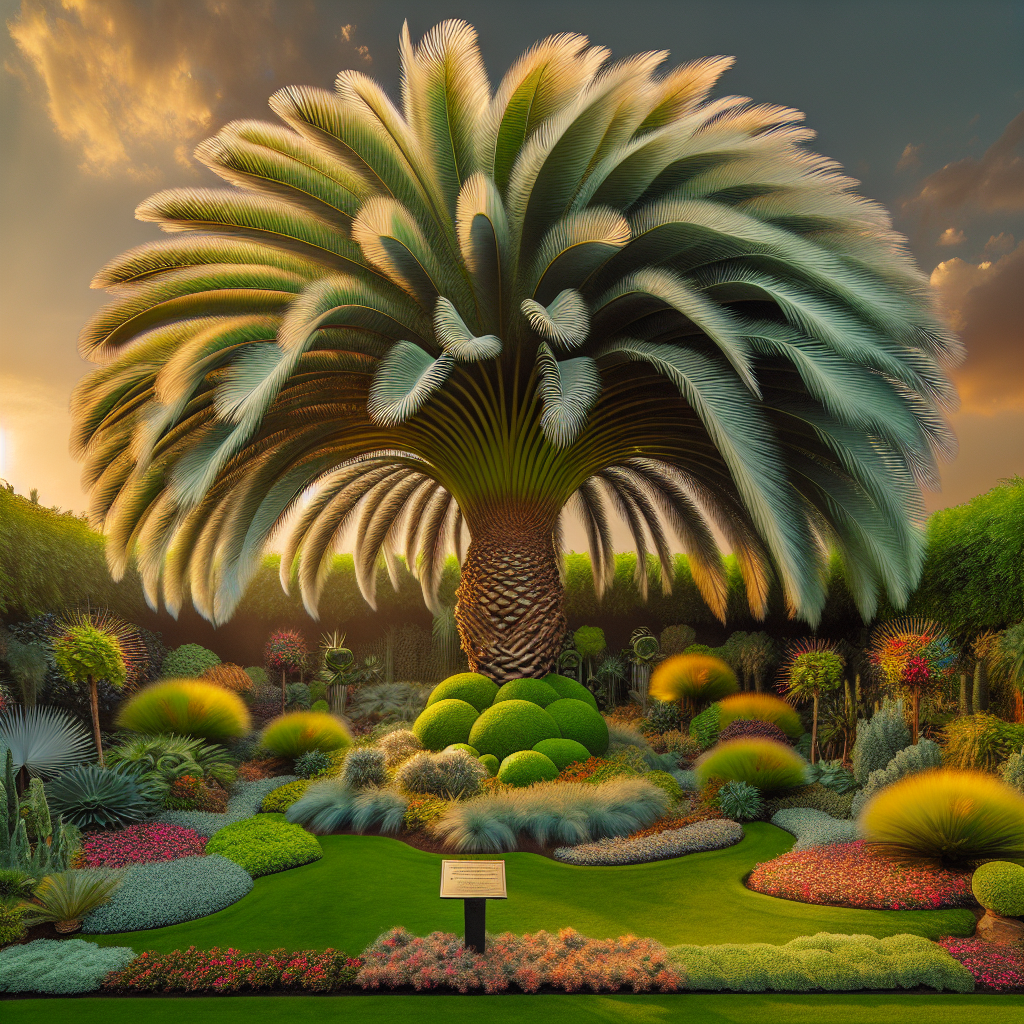[ad_1]
Creating a Tropical Paradise: Incorporating African Oil Palm into Your Landscape Design
There’s something truly magical about tropical landscapes. The lush greenery, vibrant colors, and exotic plants transport you to a world of relaxation and tranquility. If you’re looking to transform your backyard into a tropical paradise, one plant that you should definitely consider incorporating into your landscape design is the African Oil Palm (Elaeis guineensis).
The African Oil Palm is a striking palm tree with a strong presence and beautiful, arching fronds that can instantly add a touch of the tropics to your outdoor space. In addition to its aesthetic appeal, it is also a practical choice for landscaping, as it is low-maintenance and can thrive in a variety of climates. In this article, we will explore the benefits of incorporating African Oil Palm into your landscape design, as well as the best practices for caring for and sourcing this stunning plant.
Caring for African Oil Palm
The African Oil Palm is known for its resilience and adaptability, making it an excellent choice for landscaping. However, it’s important to provide the right care to ensure that it thrives in your outdoor space. Here are some tips for caring for African Oil Palm:
1. Sunlight: African Oil Palm thrives in full sunlight, so it’s important to plant it in a location where it will receive plenty of direct sunlight throughout the day.
2. Watering: African Oil Palm is drought-tolerant once established, but it’s important to water it regularly during the first few months after planting to help it establish a strong root system. After that, water the palm regularly, especially during dry periods.
3. Soil: African Oil Palm prefers well-draining soil with a neutral pH. Make sure to plant it in soil that is rich in organic matter and has good drainage to prevent waterlogging.
4. Fertilizing: Apply a balanced fertilizer to your African Oil Palm in the spring and summer to promote healthy growth. Avoid using fertilizers high in nitrogen, as this can cause the fronds to yellow.
5. Pruning: Remove dead or damaged fronds as needed to keep your African Oil Palm looking its best. Avoid pruning green fronds, as this can weaken the palm and make it more susceptible to disease.
By providing the right care, you can ensure that your African Oil Palm thrives and adds a touch of tropical beauty to your landscape.
Sourcing African Oil Palm
When it comes to incorporating African Oil Palm into your landscape design, it’s important to source healthy, high-quality plants. African Oil Palm can be cultivated from seeds, but it’s important to note that it can take several years for a seed-grown palm to reach maturity and start producing fruit. For a more immediate impact, it’s best to source mature African Oil Palm plants from a reputable nursery.
When sourcing African Oil Palm, look for plants that are free of pests and diseases and have a strong, healthy root system. Inspect the palm for any signs of stress, such as yellowing fronds or wilting, and choose a plant that looks vibrant and vigorous. It’s also a good idea to ask the nursery staff for guidance on caring for your African Oil Palm once you bring it home.
If you’re unable to find African Oil Palm at your local nursery, you can also consider purchasing it from an online retailer. Many reputable online nurseries offer a wide selection of palm trees, including African Oil Palm, and can ship healthy plants directly to your doorstep.
Incorporating African Oil Palm into Your Landscape Design
Once you have sourced a healthy African Oil Palm, it’s time to incorporate it into your landscape design. Whether you’re looking to create a small tropical oasis or a sprawling paradise, African Oil Palm can add a touch of exotic beauty to your outdoor space. Here are some ideas for using African Oil Palm in your landscape design:
1. Focal Point: Plant a single African Oil Palm as a focal point in your garden. Choose a prominent location, such as a corner or the center of a flowerbed, and surround the palm with colorful tropical plants to create a stunning visual display.
2. Privacy Screen: African Oil Palm can also be used to create a natural privacy screen. Plant several palms in a row along the edge of your property to create a lush, tropical barrier that provides shade and seclusion.
3. Poolside Oasis: If you have a pool or a water feature in your backyard, African Oil Palm can add a touch of elegance and tranquility. Plant palms around the perimeter of the pool to create a cozy, secluded retreat for relaxing and unwinding.
4. Tropical Garden: Create a tropical garden by planting African Oil Palm alongside other tropical plants, such as banana trees, bird of paradise, and hibiscus. This lush, vibrant landscape will transport you to a tropical paradise right in your own backyard.
5. Container Planting: If you have a small outdoor space or live in a colder climate, you can still enjoy the beauty of African Oil Palm by planting it in a large container. Place the container on a patio or balcony to add a touch of the tropics to your urban oasis.
No matter how you choose to incorporate African Oil Palm into your landscape design, it’s sure to add a touch of the tropics to your outdoor space and create a relaxing, exotic atmosphere.
In conclusion, the African Oil Palm is a stunning and versatile plant that can transform your backyard into a tropical paradise. By providing the right care, sourcing healthy plants, and incorporating it into your landscape design, you can enjoy the beauty and tranquility of the tropics right in your own outdoor space. Whether you’re looking to create a small oasis or a sprawling paradise, African Oil Palm is an excellent choice for adding a touch of exotic beauty to your landscape. With its lush, arching fronds and striking presence, African Oil Palm is sure to make a statement in any outdoor setting. So go ahead, create your own tropical paradise, and incorporate African Oil Palm into your landscape design today.
[ad_2]




